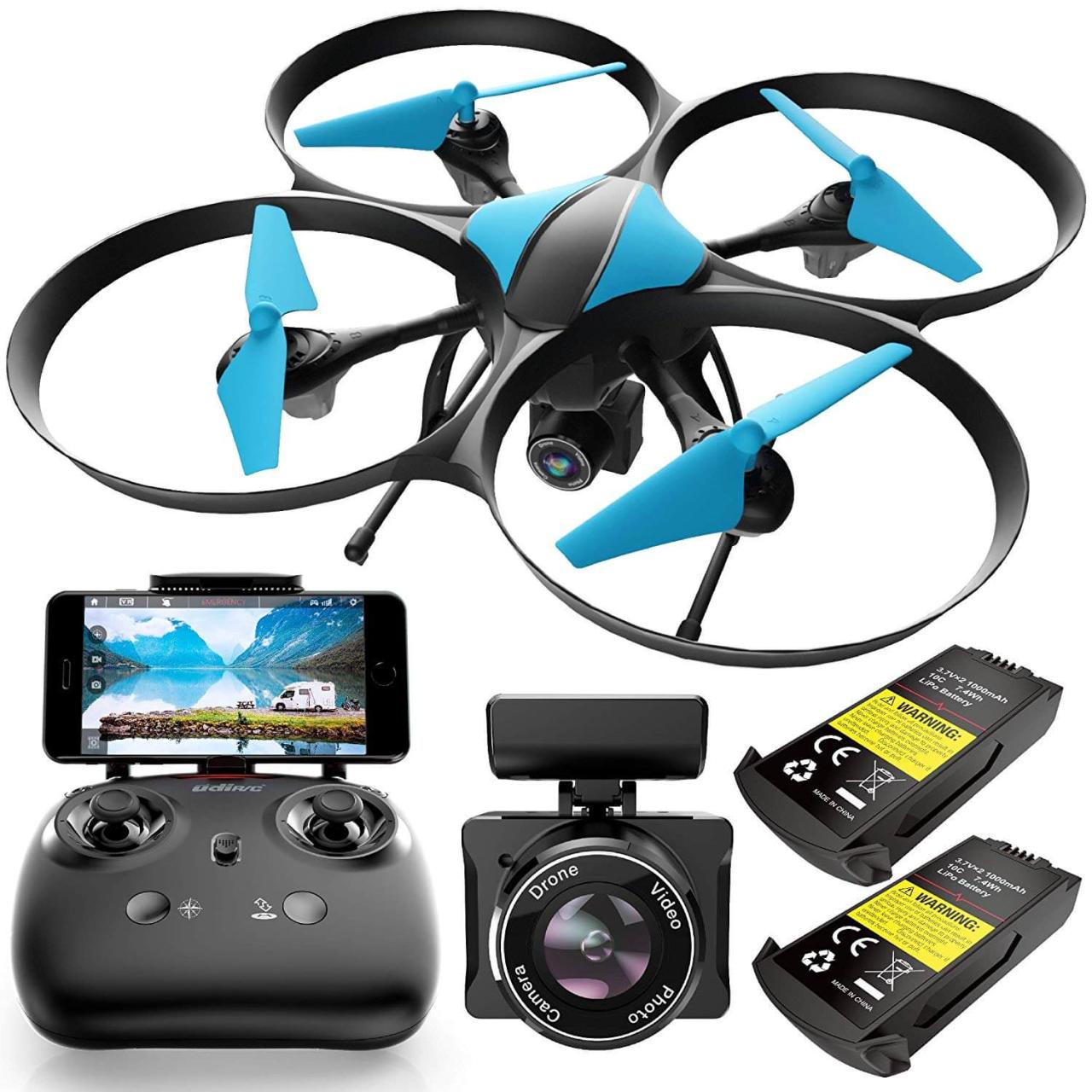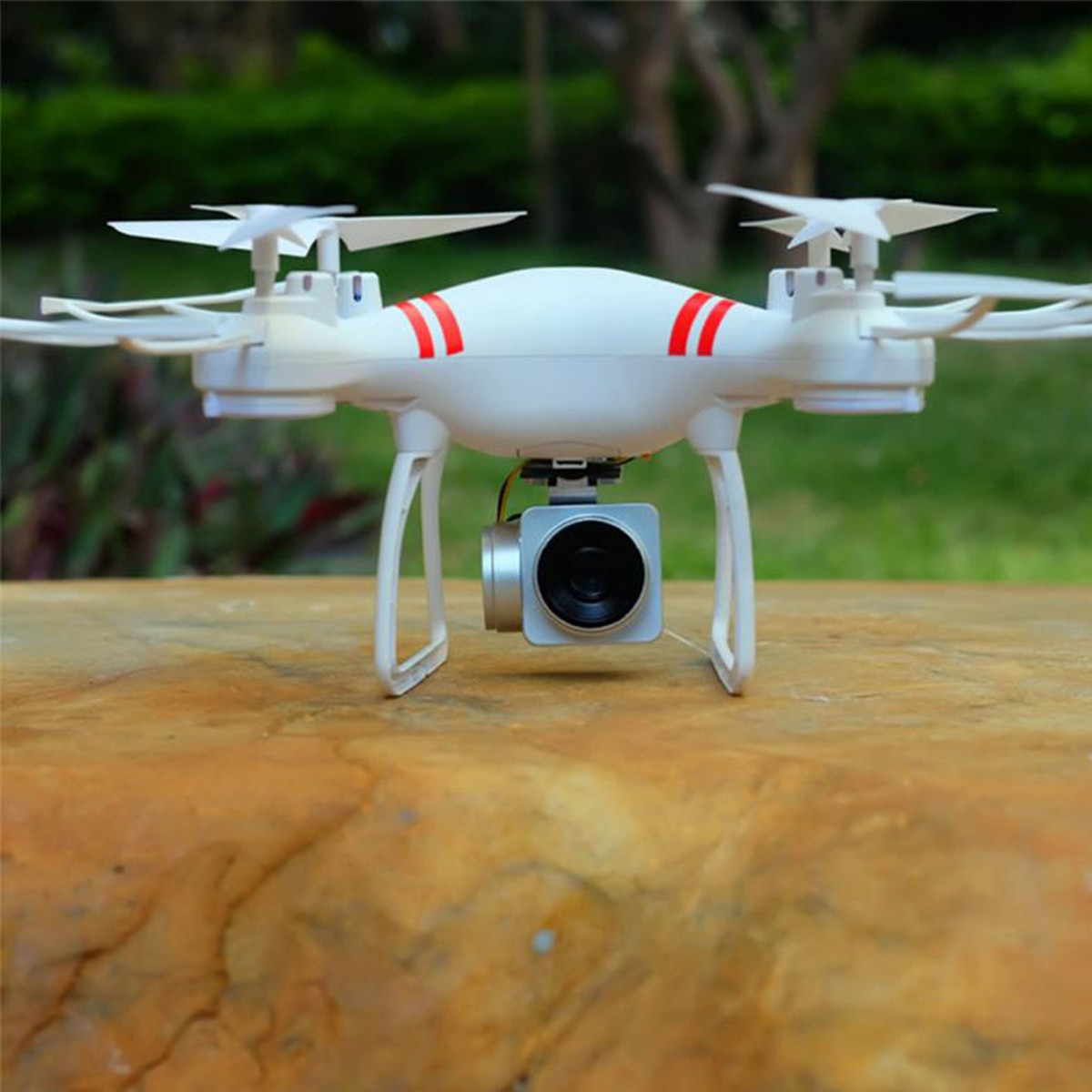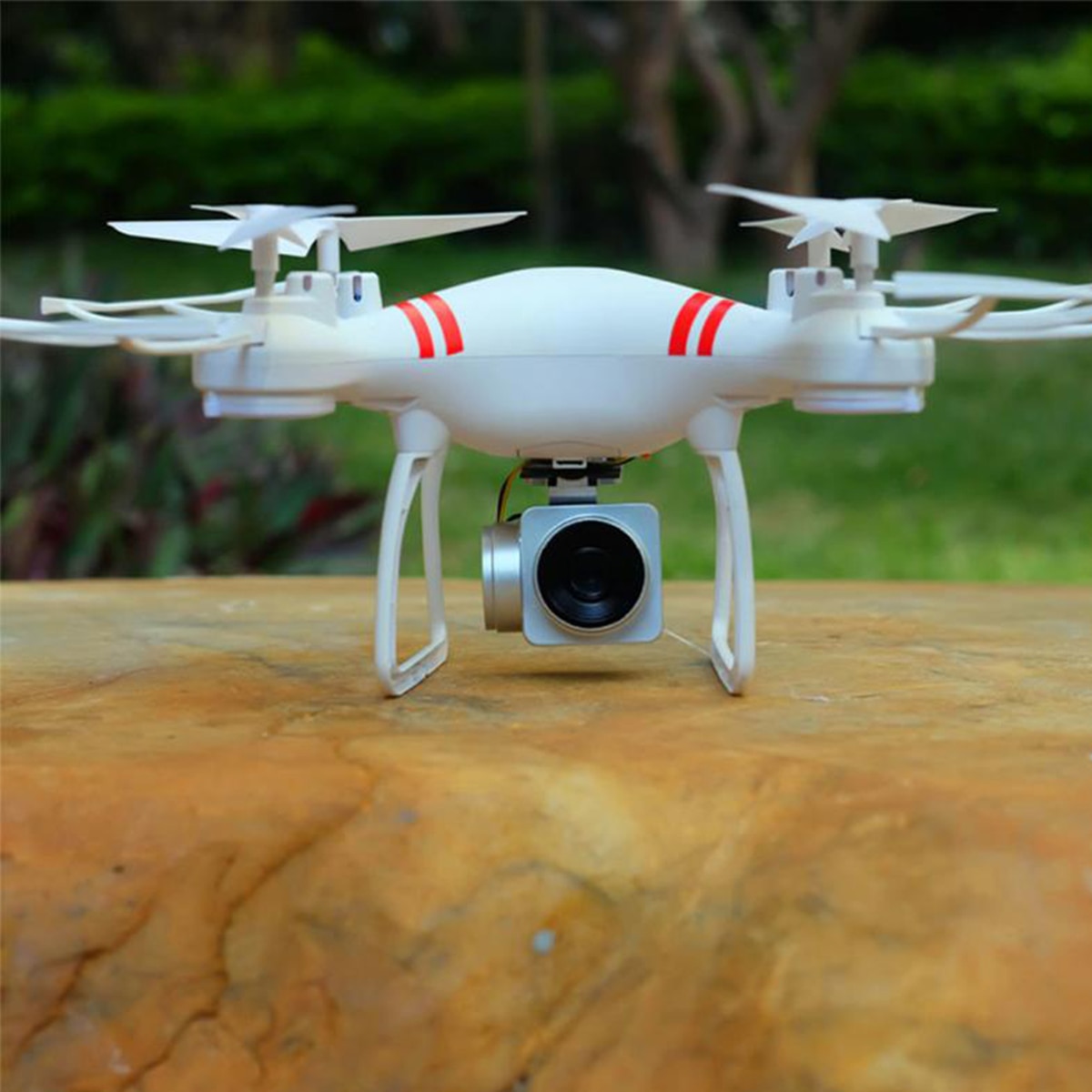Drone with camera technology has revolutionized various sectors, from aerial photography and videography to industrial inspections and surveillance. This exploration delves into the multifaceted world of drones equipped with cameras, examining diverse types, advanced camera technologies, practical applications across numerous industries, pertinent legal considerations, and essential safety protocols for responsible operation. We’ll uncover the intricacies of these versatile tools and their impact on modern society.
From the smallest nano-drones to larger, heavy-lift models, we’ll analyze the capabilities and limitations of different drone platforms, highlighting key features such as GPS, obstacle avoidance systems, and thermal imaging. We will also examine the different camera technologies employed, including sensor types, lens capabilities, and image processing techniques. The applications explored will span diverse fields, discussing both the benefits and potential ethical concerns associated with each use case.
Types of Drones with Cameras
Drones equipped with cameras have revolutionized various sectors, offering versatile aerial perspectives and data acquisition capabilities. The market offers a diverse range of drones, categorized by size, features, and intended use. Understanding these distinctions is crucial for selecting the appropriate drone for specific tasks.
Drone Types: A Categorized Overview
The following table provides a comprehensive overview of drone types, highlighting their key characteristics and applications.
| Type | Size | Features | Use Cases |
|---|---|---|---|
| Nano Drone | Lightweight, highly portable | Basic camera, limited flight time, often lacks GPS | Hobbyist photography, indoor filming |
| Micro Drone | Small and compact | Improved camera quality, longer flight time than nano drones, some models offer GPS | Aerial photography, short-range surveillance, real estate photography |
| Mini Drone | Larger than micro drones, more robust | GPS, obstacle avoidance, higher-quality cameras, longer flight times | Videography, professional photography, inspections (limited) |
| Standard Drone | Mid-sized, versatile | Advanced features: GPS, obstacle avoidance, high-resolution cameras, extended flight time, interchangeable lenses, payload capacity | Professional videography, photography, mapping, surveying, agriculture |
| Large Drone | Heavy-duty, high payload capacity | Advanced features: GPS, obstacle avoidance, thermal imaging, high-resolution cameras, extended flight time, significant payload capacity | Industrial inspection, construction monitoring, search and rescue, large-scale mapping |
Advantages and Disadvantages of Drone Types
Each drone type presents unique advantages and disadvantages, influencing its suitability for specific applications.
Nano Drones: Advantages include portability and affordability. Disadvantages include short flight times, limited features, and lower image quality.
Micro Drones: Advantages include improved image quality and longer flight times compared to nano drones. Disadvantages include still limited payload capacity and features.
Mini Drones: Advantages include a balance of features, flight time, and portability. Disadvantages include higher cost compared to smaller drones.
Standard Drones: Advantages include versatile features and capabilities suitable for a wide range of applications. Disadvantages include higher cost and less portability.
Large Drones: Advantages include high payload capacity and advanced features for demanding tasks. Disadvantages include high cost, limited portability, and stringent regulations.
Drone Camera Specifications Examples

The following are examples of specifications, note that these are representative and actual specifications vary significantly between models.
Drones equipped with cameras offer incredible versatility, from aerial photography to infrastructure inspections. The capacity for these devices to carry substantial payloads is crucial for various applications, and understanding the limitations is key. For instance, examining the specifics of remington drone loads provides valuable insight into weight restrictions and their impact on flight time and overall performance.
This knowledge directly influences the types of cameras and other equipment that can be effectively integrated into a drone system.
- Nano Drone Example: Camera resolution: 4K, Sensor size: 1/2.3″, Flight time: 10 minutes, Range: 50 meters
- Micro Drone Example: Camera resolution: 4K, Sensor size: 1/2.3″, Flight time: 20 minutes, Range: 100 meters
- Mini Drone Example: Camera resolution: 4K, Sensor size: 1/1.7″, Flight time: 30 minutes, Range: 200 meters
- Standard Drone Example: Camera resolution: 6K, Sensor size: 1/1.3″, Flight time: 40 minutes, Range: 500 meters
- Large Drone Example: Camera resolution: 8K, Sensor size: 1″, Flight time: 60 minutes, Range: 1000 meters
Camera Technology in Drones: Drone With Camera

Drone camera technology significantly impacts image and video quality. Understanding the different technologies and their capabilities is crucial for selecting the right drone for your needs.
CMOS vs. CCD Sensors
CMOS (Complementary Metal-Oxide-Semiconductor) and CCD (Charge-Coupled Device) are two primary sensor types used in drone cameras. CMOS sensors are more prevalent due to their lower power consumption, faster readout speeds, and on-chip processing capabilities. CCD sensors generally offer better image quality, particularly in low-light conditions, but consume more power.
Lens Types and Image Stabilization
Drone cameras utilize various lens types, including wide-angle, telephoto, and zoom lenses, each offering different perspectives and capabilities. Effective image stabilization is crucial for capturing sharp images and smooth videos, often achieved through electronic image stabilization (EIS) or mechanical gimbal stabilization.
Image Processing Capabilities
Advanced image processing features enhance image quality and workflow efficiency. HDR (High Dynamic Range) expands the dynamic range, capturing details in both bright and dark areas. RAW image capture preserves maximum image data for post-processing. Common video recording formats include H.264 and H.265, offering different levels of compression and quality.
Image Quality Comparison Across Sensor Sizes, Drone with camera
Sensor size directly impacts image quality, particularly low-light performance and depth of field. Larger sensors generally produce better images with less noise.
| Sensor Size | Low Light Performance | Dynamic Range | Noise Levels |
|---|---|---|---|
| 1/2.3″ | Poor | Limited | High |
| 1/1.7″ | Good | Improved | Moderate |
| 1/1.3″ | Excellent | Excellent | Low |
Applications of Drones with Cameras
Drones with cameras are transforming various industries by providing efficient and cost-effective solutions for data acquisition and analysis.
Agriculture
- Crop monitoring and yield prediction: Drones capture high-resolution imagery to assess crop health and predict yields.
- Precision spraying: Drones enable targeted pesticide and fertilizer application, reducing waste and environmental impact.
- Irrigation management: Aerial imagery helps optimize irrigation schedules by identifying areas requiring more or less water.
Construction
- Progress monitoring: Drones provide regular updates on construction progress, identifying potential delays or issues.
- Site surveying and mapping: Drones create detailed 3D models of construction sites, assisting in planning and execution.
- Inspection of structures: Drones inspect bridges, buildings, and other structures for damage, reducing risks and costs.
Real Estate
- Property photography and videography: Drones capture stunning aerial images and videos of properties, enhancing marketing materials.
- Site assessment: Drones provide detailed aerial views of properties and surrounding areas, aiding in decision-making.
- Virtual tours: Drones create immersive virtual tours of properties, allowing potential buyers to explore them remotely.
Ethical Considerations and Potential Risks
The use of drones with cameras raises ethical considerations and potential risks related to privacy, security, and safety. Appropriate regulations and guidelines are crucial to mitigate these risks and ensure responsible drone operation.
Workflow for Bridge Inspection
A typical workflow for inspecting a bridge using a drone involves:
- Flight Planning: Define flight paths and capture points using specialized software.
- Image Capture: Fly the drone along pre-planned routes, capturing high-resolution images and videos of the bridge structure.
- Data Processing: Use photogrammetry software to process the captured images and create a 3D model of the bridge.
- Damage Detection: Analyze the 3D model and images to identify cracks, corrosion, or other damage.
- Report Generation: Create a detailed report summarizing the findings, including images and 3D model visualizations.
Legal and Regulatory Aspects

Operating drones with cameras requires adherence to legal and regulatory frameworks that vary across jurisdictions. Understanding these regulations is crucial for legal and responsible drone operation.
Legal Frameworks and Permits
Regulations concerning drone operation often cover aspects like registration, licensing, operational airspace restrictions, and data privacy. These regulations are dynamic and vary considerably between countries and regions. It’s crucial to consult local aviation authorities for the most up-to-date information.
Data Privacy and Security
When using drones for surveillance or data collection, strict adherence to data privacy regulations is mandatory. Data should be handled responsibly, ensuring compliance with relevant laws and ethical guidelines.
| Region | Data Privacy Regulations | Operational Permits |
|---|---|---|
| United States | Various state and federal laws regarding data privacy | FAA Part 107 certification required for commercial operation |
| European Union | GDPR (General Data Protection Regulation) applies to data collected by drones | National aviation authorities regulate drone operation |
| Canada | Personal Information Protection and Electronic Documents Act (PIPEDA) | Transport Canada regulates drone operation |
Drone Maintenance and Safety
Regular maintenance and adherence to safety guidelines are crucial for ensuring the longevity and safe operation of drones with cameras.
Essential Maintenance Procedures
- Battery Care: Store batteries properly, avoid overcharging, and replace them when necessary.
- Sensor Cleaning: Regularly clean the camera lens and other sensors to prevent image degradation.
- Firmware Updates: Keep the drone’s firmware updated to benefit from bug fixes and performance improvements.
- Propeller Inspection: Inspect propellers for damage and replace them if necessary.
Safety Guidelines
- Flight Planning: Always plan your flights carefully, considering weather conditions, airspace restrictions, and potential obstacles.
- Weather Conditions: Avoid flying in strong winds, rain, or snow.
- Emergency Procedures: Familiarize yourself with emergency procedures, including battery failure and loss of signal.
- Visual Line of Sight: Maintain visual line of sight with your drone at all times, unless operating under specific exemptions.
Troubleshooting Common Drone Camera Issues
- Blurry Images: Check focus settings, ensure proper image stabilization, and clean the lens.
- Video Glitches: Check SD card capacity and quality, ensure sufficient battery power, and update firmware.
- Loss of Signal: Ensure sufficient distance from interference sources, check antenna connections, and consider using a signal booster.
In conclusion, drones with cameras represent a powerful and rapidly evolving technology with transformative potential across a wide range of industries. Understanding the various types, capabilities, legal frameworks, and safety protocols is crucial for responsible and effective utilization. As technology continues to advance, the applications of drone-based camera systems will undoubtedly expand, demanding a continuous focus on ethical considerations and regulatory compliance to ensure their safe and beneficial integration into our world.
FAQ Corner
What is the flight time of a typical drone with a camera?
Flight times vary significantly depending on the drone model, battery size, and environmental factors. Expect anywhere from 15 to 45 minutes on a single charge.
How do I ensure my drone footage is legally compliant?
Drones equipped with cameras offer incredible versatility, from aerial photography to real-estate inspections. However, operating such a device responsibly requires understanding the regulations. Before taking to the skies, it’s crucial to obtain the necessary authorization, such as a transport canada drone license , to ensure compliance and safe operation of your drone with camera. This ensures you’re flying legally and minimizing potential risks.
Familiarize yourself with and adhere to all local and national laws regarding drone operation, including airspace restrictions, privacy regulations, and required permits or licenses. Always prioritize safety and respect others’ privacy.
What should I do if my drone loses signal?
Most drones have a return-to-home (RTH) function. Activate this immediately. If the RTH fails, visually track the drone and attempt to regain control. If unsuccessful, report the incident to relevant authorities.
How do I clean the camera lens on my drone?
Use a soft, microfiber cloth and gently wipe the lens. Avoid harsh chemicals or abrasive materials. Compressed air can be used to remove dust particles.
